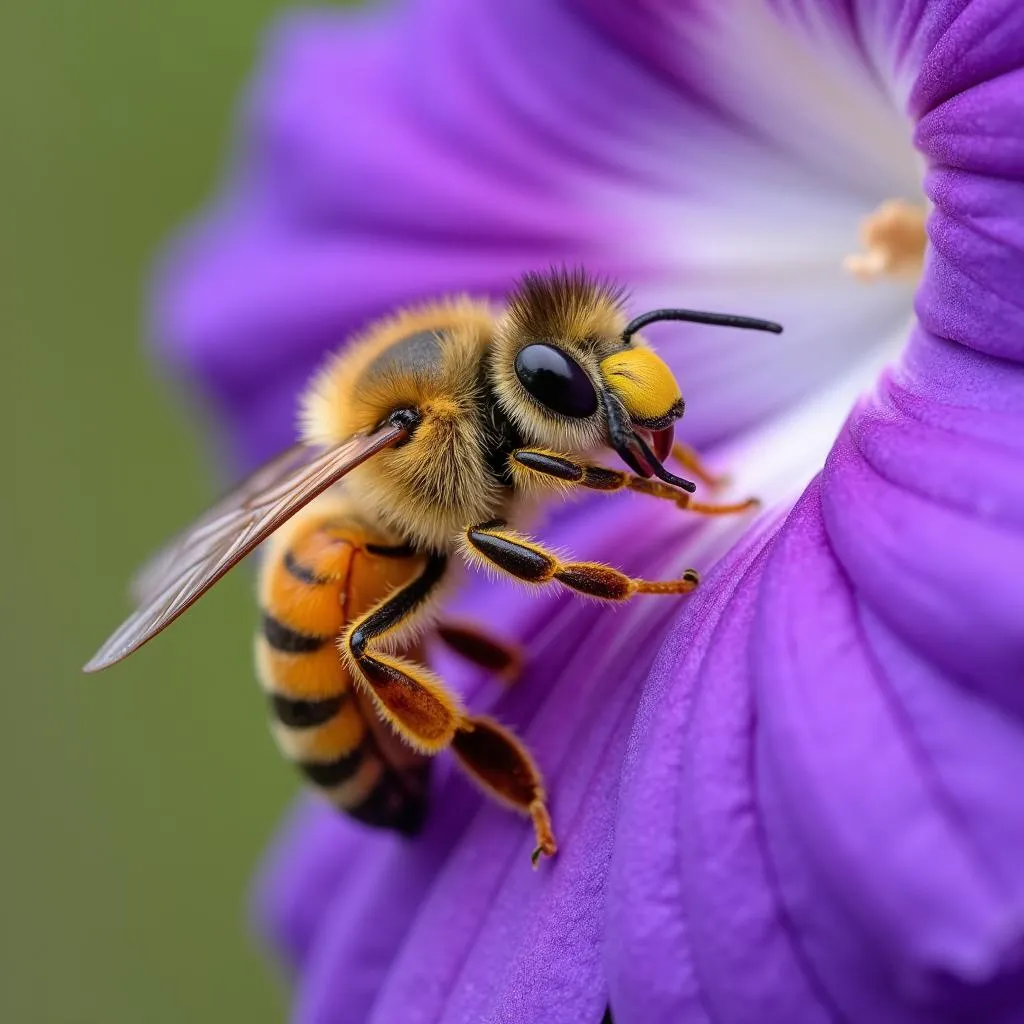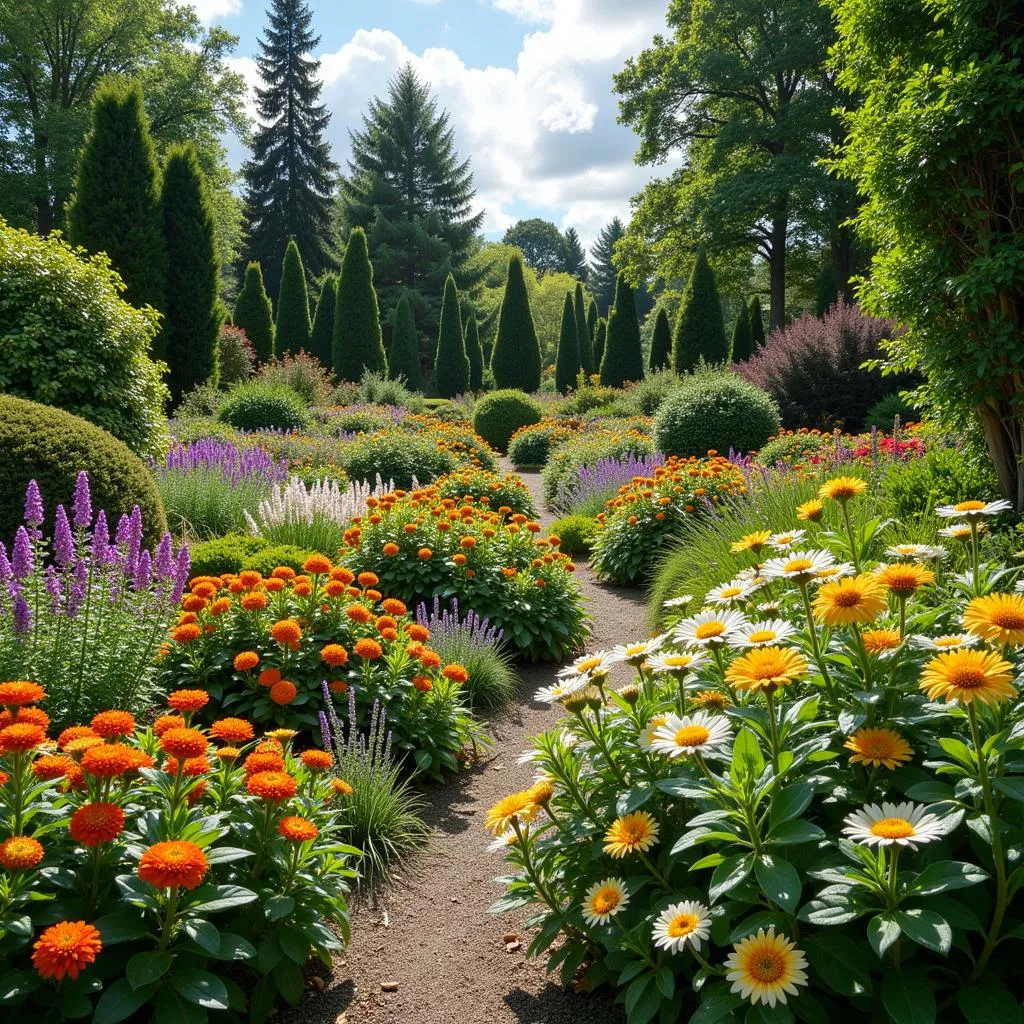Flowers, those beautiful creations of nature, captivate our senses with their alluring fragrance and, of course, their stunning array of colors. But have you ever wondered what determines the color of a flower? It’s a fascinating world where science meets art, resulting in the incredible diversity of hues we see in our gardens and beyond.
The Science Behind Flower Colors
The vibrant colors of flowers are not merely for our enjoyment; they play a crucial role in the survival and propagation of these plants. Flower colors are primarily determined by pigments, natural substances that absorb certain wavelengths of light and reflect others. The reflected wavelengths are what our eyes perceive as color.
Pigments: The Artists of the Plant World
The most common pigment group responsible for a wide range of colors, from vibrant reds and oranges to deep blues and purples, is called anthocyanins. These pigments are water-soluble and are found in the vacuoles (storage compartments) of plant cells.
Another important group is carotenoids, responsible for yellows, oranges, and some reds. Think of sunflowers and marigolds – their bright, sunny hues are a testament to the power of carotenoids. Unlike anthocyanins, carotenoids are fat-soluble and are typically found in plastids, another type of plant cell organelle.
 Pigment Molecules in Flowers
Pigment Molecules in Flowers
Beyond Pigments: Other Factors Influencing Flower Color
While pigments lay the foundation for flower color, other factors can influence the final hue we perceive.
- pH Levels: The acidity or alkalinity of the soil can impact the color of some flowers, particularly those with anthocyanin pigments. For instance, hydrangeas grown in acidic soil tend to produce blue flowers, while those in alkaline soil often bloom pink.
- Light Exposure: The intensity and duration of sunlight can affect the vibrancy of flower colors. Some flowers may appear more washed out in intense sunlight, while others achieve their most vibrant hues under such conditions.
- Age: Just like humans, flowers experience changes as they age. The color of a flower may intensify or fade as it matures, signaling different stages in its life cycle to potential pollinators.
The Purposeful Palette: Attracting Pollinators
Flowers have evolved their diverse color palettes for a very important reason: to attract pollinators like bees, butterflies, and birds. These creatures are essential for plant reproduction, carrying pollen from one flower to another, enabling fertilization and the production of seeds.
Did you know that different pollinators are attracted to different colors? For instance, bees are particularly drawn to blue, purple, and yellow flowers, while butterflies are attracted to a wider range of colors, including red, orange, and pink. Discover more about the colors that attract butterflies.
 Bee Pollinating a Purple Flower
Bee Pollinating a Purple Flower
The Language of Flowers: Color Symbolism
Throughout history and across cultures, flowers and their colors have been imbued with symbolic meanings, conveying emotions and messages without words. Red roses, for instance, are universally recognized as a symbol of love and passion, while white lilies represent purity and innocence.
Creating a Colorful Garden: Tips from Color Box Hanoi
As a color expert at Color Box Hanoi, I believe that understanding the language of flower colors can help you create stunning and meaningful gardens.
Here are a few tips:
- Consider the light conditions in your garden: Some flowers thrive in full sun, while others prefer shade. Choose varieties that are best suited for your garden’s unique environment.
- Create a balanced color palette: Just like in interior design, balance is key when designing a garden. Use a mix of warm and cool colors to create visual interest and harmony.
- Think about the message you want to convey: Whether you want to create a calming oasis or a vibrant celebration, choose flower colors that evoke the desired emotions.
 Colorful Flower Garden Design
Colorful Flower Garden Design
Conclusion: Embrace the Colorful World of Flowers
Flowers, with their captivating colors, are a testament to the beauty and wonder of the natural world. Understanding the science and symbolism behind their hues allows us to appreciate them on a deeper level. So, the next time you encounter a flower, take a moment to truly observe its color—you might be surprised by what you discover.
FAQs
1. Why are some flowers white?
White flowers do not contain any pigments. They appear white because their petals reflect all wavelengths of light equally.
2. Can the color of a flower change?
Yes, the color of some flowers can change due to factors like soil pH, light exposure, and age.
3. Do all flowers have a scent?
No, not all flowers have a scent. Some flowers rely solely on their vibrant colors to attract pollinators.
4. What is the rarest flower color?
Blue is considered the rarest flower color in nature.
5. How can I keep my cut flowers fresh longer?
To prolong the life of your cut flowers, trim the stems at an angle, use flower food, and change the water every other day.
Need Help Choosing the Perfect Colors for Your Home or Garden?
Contact Color Box Hanoi at 0373298888 or email us at [email protected]. We offer expert color consultations to help you create spaces that inspire and delight. Visit our showroom at 86 Cầu Giấy, Hà Nội, and let our team guide you through a world of possibilities. Our customer service representatives are available 24/7 to assist you.

